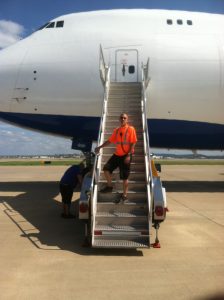
Dr. Stacie Grossfeld, Louisville orthopedic surgeon, is double-board certified in both orthopedic surgery and orthopaedic sports medicine through the American Board of Orthopedic Surgeons. But what exactly does that mean? Is one more important than the other? How do you get board-certified?
You’re in luck! Because Orthopaedic Specialists is here with a short overview of sports medicine, board certifications, and what it means to be an orthopedic specialist.
Sports Medicine and Orthopedic Surgery
When a doctor goes through medical school, eventually, they make it to their period of residency, which is where the hopeful doctor hones their skills in the specialty of their choice. There are plenty of medical specialties to choose from, be it pediatrics, cardiology, genecology, anesthesiology, family medicine, psychiatry, plastic surgery, dermatology, etc., and orthopaedic surgery is one of them. Due to the broad nature of each specialty, doctors can then choose to get even more granular and earn a certificate in a subspecialty. Common subspecialties in orthopedic surgery are:
- Adult Reconstructive Orthopaedics
- Hand Surgery
- Musculoskeletal Oncology
- Orthopaedic Sports Medicine
- Orthopaedic Surgery of the Spine
- Pediatric Orthopaedics
So, Dr. Grossfeld was first board-certified in orthopedic surgery by the American Board of Orthopedic Surgery after her residency and internship at the University of Minnesota, and then obtained her subspecialty in Sports Medicine after completing her fellowship at the Fowler-Kennedy Sports Medicine Center.
What are the American Board of Orthopedic Surgery’s Qualifications to Earn a Subspecialty?
According to the ABOS, “The Subspecialty Certificate in Orthopaedic Sports Medicine is for Board-Certified orthopaedic surgeons who have demonstrated qualifications in sports medicine beyond those expected of other orthopaedic surgeons by virtue of additional training, a practice characterized by a volume of cases in sports medicine, or have made significant contributions to this field.”
Other qualifications include:
- Candidates must have completed a one year ACGME accredited fellowship in orthopaedic sports medicine
- Candidates must have a one-year case list submitted, composed of at least 115 operative cases and 10 non-operative cases
- Seventy five of the 115 operative cases must involve arthroscopy as a component of the procedure
- Candidates must complete a four-hour examination consisting of 175 multiple-choice questions
How is an Orthopedic Sports Medicine Specialist Different From a Regular Orthopedic Surgeon?
Orthopedic sports medicine specialists are orthopaedic surgeons, but they specialize in treating and preventing athletic or exercise injuries. Many times, sports medicine specialists will also focus on other lifestyle factors, such as training, physical therapy exercises, and nutrition. This specialty is also applied to other mobility-related injuries for those with disabilities or chronic conditions like arthritis.
Common conditions that an orthopedic sports medicine specialist might treat are:
- Trauma, broken bones, and fractures
- Dislocations and separations
- Tendonitis
- Joint injections
- Shoulder pain and injuries, such as:
- Rotator cuff tears
- Dislocated shoulders
- Frozen shoulders
- Pitcher’s shoulder
- Shoulder Impingement Syndrome
- Swimmer’s shoulder
- Nerve compression
- Arthritis
- Overuse injuries
- Torn cartilage
- Knee pain and injuries, such as:
- ACL injuries
- MCL injuries
- PCL injuries
- Knee arthroscopies
- Foot and ankle injuries
- Elbow, wrist, arm, and finger injuries
- Sprains and strains
- Tennis elbow
If you or someone you love has suffered a sports injury in the Louisville, Kentucky-area, double-board certified orthopedic sports medicine physician and orthopaedic surgeon Dr. Stacie Grossfeld at Orthopaedic Specialists PLLC can help. Orthopaedic Specialists PLLC is accepting new patients, and same day appointments are available. For additional information or to schedule an appointment, please contact Orthopaedic Specialists PLLC today at 502-212-2663.




 A job at an airline is one that provides ample opportunity to encounter all sorts of individuals. Mr. Attig happened to assist a passenger with a knee brace and got to talking about the passenger’s injury. It was here that he received a recommendation for an orthopedic surgeon in Louisville by the name of Dr. Stacie Grossfeld. And, as fate would have it, the name would come up again with his family physician, who he saw when his knee pain began affecting his active electrical work and airline responsibilities.
A job at an airline is one that provides ample opportunity to encounter all sorts of individuals. Mr. Attig happened to assist a passenger with a knee brace and got to talking about the passenger’s injury. It was here that he received a recommendation for an orthopedic surgeon in Louisville by the name of Dr. Stacie Grossfeld. And, as fate would have it, the name would come up again with his family physician, who he saw when his knee pain began affecting his active electrical work and airline responsibilities.
 For many of us that lead busy lives, there never seems to be much time to commit to the proper amount of exercise recommended, which is 30-60 minutes per day for adults. Between managing a family, having a full-time job, cooking healthy meals, and taking care of our home and other responsibilities, getting a gym membership on top of it all seems like a moot point. But there are plenty of easy exercises to strengthen your joints and muscles that you can get from the comfort of your home, or even during your day by making conscious choices; a popular one? Walking!
For many of us that lead busy lives, there never seems to be much time to commit to the proper amount of exercise recommended, which is 30-60 minutes per day for adults. Between managing a family, having a full-time job, cooking healthy meals, and taking care of our home and other responsibilities, getting a gym membership on top of it all seems like a moot point. But there are plenty of easy exercises to strengthen your joints and muscles that you can get from the comfort of your home, or even during your day by making conscious choices; a popular one? Walking!

 This type of injury is known by terms other than whiplash, such as neck strain or neck sprain, so it might be called by a different name when it comes to articles on the internet or health providers. It also refers to a broader range of injuries rather than just one, like most other injury-related terms do, because when the neck bounces back and forth, the muscles, ligaments and tendons, and/or joints are manipulated past the point of their normal range of motion.
This type of injury is known by terms other than whiplash, such as neck strain or neck sprain, so it might be called by a different name when it comes to articles on the internet or health providers. It also refers to a broader range of injuries rather than just one, like most other injury-related terms do, because when the neck bounces back and forth, the muscles, ligaments and tendons, and/or joints are manipulated past the point of their normal range of motion.
Recent Comments